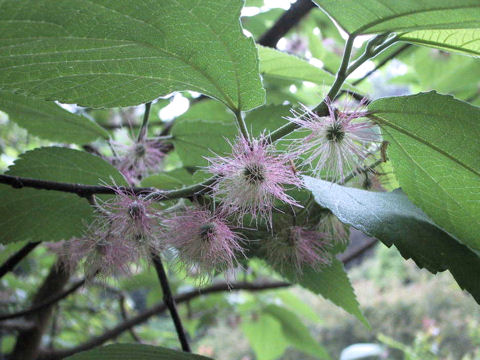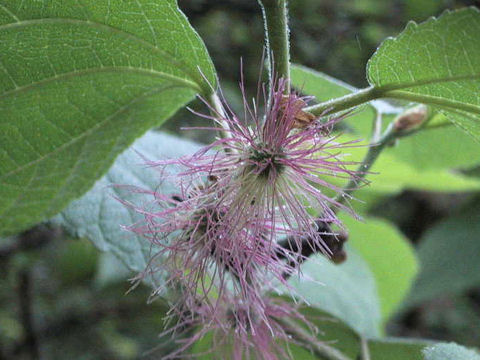
|
The "Kozo" (Broussonetia x kazinoki) belongs to Moraceae (the Mulberry family). It is a small deciduous tree that is probably native to China, and came to Japan along with paper at the beginning of the 7th century. It is cultivated for papermaking Chugoku region of Honshu, Shikoku and Kyushu in Japan, and also grows wild. It is thought to be an interspecific hybrid between "Hime-kozo" (Broussonetia kazinoki) and the Paper mulberry (Broussonetia papyrifera). The tree grows 2 to 6 m tall and has brown bark with small lenticels. The leaves are alternate, asymmetrical ovate, with a petiole 1 to 2 cm long. It is dioecious, with female and male inflorescences in the leaf axils from April to May. The style is slightly longer than that of "Hime-kozo". The fruit is a aggregate fruit, but it rarely bears fruit. The bark is very tough and has been used to make Japanese paper.
|




